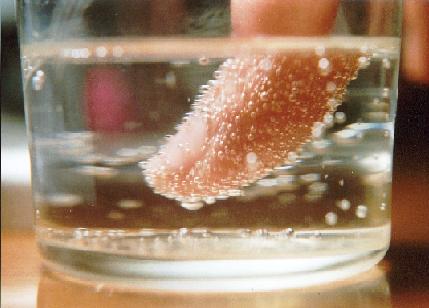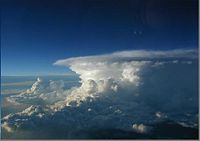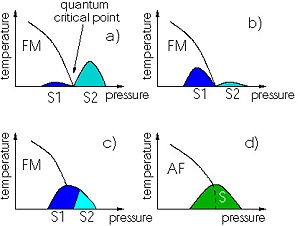Nucleation, droplets, and the physics of clouds
{{#ev:youtube|g4kBNBEJKD8}} A more dangerous application of nucleation!
Nucleation is the process which results in the formation of a particle (or nuclei) of a different thermodynamic phase from a solution, liquid, or vapor. This process is very important, as almost every first-order phase transition proceeds from nucleation. Some second order processes, such as ferromagnetic reorientation and crystallization, are also caused by nucleation. There will be some basic equations and definitions for second-order nucleation, but since the physics of clouds deals with first order phase transitions (namely condensation), most of this project will be devoted to nucleation in first order phase transitions. This process occurs all throughout science and nature and has several applications, both harmless and dangerous, from the delicate formation of clouds to the explosion caused by placing Mentos in Coke. Nucleation is also very important in the development of semiconductors. In nature this process occurs at an interface, such as the surface of a container which holds the fluid or the surface of a particle of dust which is in the solution. This is referred to as heterogeneous nucleation and happens much more often than homogeneous nucleation, which occurs in completely pure liquids. This type of nucleation requires activation by supercooling or superheating the fluid. If this nucleus is the appropriate size, after nucleation the nucleus (or droplet in clouds) will continue to grow. This process is referred to as nucleation and growth, which is very important when describing precipitation in clouds.
Phase Transitions
Before defining nucleation in more detail, it is necessary to start by stating some basic principles in thermodynamics and phase transitions. There are two orders of phase transitions. First order transitions refer to discontinuous jumps in phase transitions, such as condensation and freezing. Second-order transitions are more complicated and are described as continuous transitions. Ferromagnets, superconductors, and supercritical fluids all result from second order phase transitions.
Also, there are two states of matter, that which is in equilibrium and that which is not. The second law of thermodynamics tells us that the entropy of an isolated system not in equilibrium will tend to increase over time, approaching a maximum value at equilibrium. This explains why matter self-assembles, or re-arranges itself in the most energy efficient form. After a phase transition one can find a system which is in non-equilibrium, and it will immediately begin to re-assemble. Phase transitions always change the entropy of a system, usually from a more ordered state to a less ordered state (such as melting and evaporation). In any system the free energy is the difference of the internal energy and the entropy, that is, E = U - TS, where T is the temperature of the system. Phase separation occurs when the same matter exists in two different phases in the same system (same temperature, pressure, etc.). In relation to the free energy there are now three types of stability that should be mentioned, which are based on the free energy.
Stable - A system in which a phase separation would cause an increase in the free energy. This phase separation doesn't happen naturally, so the system is stable and doesn't change.
Unstable - A system in which a phase separation causes a decrease in the free energy. This process will happen at any small fluctuation in the system, so the system is very unstable and usually changes immediately.
Metastable - The system is stable with respect to small fluctuations in the matter, but will phase separate with larger fluctuations. This system has an energy barrier which needs to be overcome in order for these phases to separate.
Co-existence occurs when different phase of matter exist at the same time, and a graph of the phase states as a function of temperature and pressure is referred to as the coexistence dome. The concepts of phase separation and coexistence are very important for the physics of clouds as well as other forms of matter, such as gasoline.
Nucleation Definition & Derivation
It is in this metastable state where nucleation occurs. For phase separation to occur, a drop of the material at one phase must be nucleated, using thermal activation, into a drop of the other phase. There are two factors which contribute to the formation of a droplet. An interface must be formed, which will contribute positively to the energy, and a negative contribution from the volume of the droplet. This is because the phase separation that is about to occur will decrease the free energy (the system is increasing in stability). For a system that exists over a long period of time (), the energy E that is required to form of a droplet of liquid matter can be defined as:
,
where is the surface tension, S(t) is the surface area with respect to time, h is a small chemical potential, and V(t)is the volume with respect to time. The sphere is geometrically the most efficient shape for the droplet to be in be in because it minimizes the area of interface between the two drops, and in nature this is the shape that the droplet takes. Substituting the surface area and volume of a sphere into the equation, we get:
Taking the derivative and setting it equal to zero, we can find the maximum (critical) droplet size:
Therefore, the radius of the critical droplet is dependent on the surface tension of the droplet and the chemical potential of the material. If the droplet will grow (nucleation and growth), and if the droplet will shrink.










